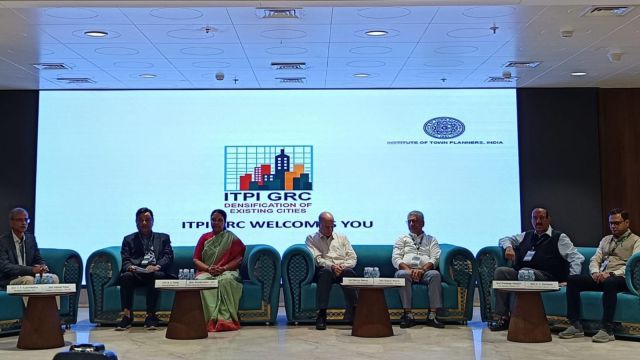Workshop held in Ahmedabad: Urban planners advocate for policy changes to enable densification of cities
NK Patel, National President of ITPI, underlined the urgent need for cities to adopt compact development models
 Warning that “cities that stagnate suffer an economic death”, CEPT University President Barjor Mehta noted the strategic importance of cities in India’s economic aspirations (Express Photo)
Warning that “cities that stagnate suffer an economic death”, CEPT University President Barjor Mehta noted the strategic importance of cities in India’s economic aspirations (Express Photo)Urban planners emphasised the need for policy changes in the existing development plan during the Gujarat Regional Chapter of the Institute of Town Planners, India workshop. They suggested halving the percentage of land under private ownership to enable densification in cities. The workshop on “Densification of Existing Cities: Opportunities and Challenges” was held on Saturday in Ahmedabad.
“Measures like widening of streets and adding new ones, area under public domain to be increased from existing 22 to 40 per cent, area under private-domain majorly as open land around the compound walls much of which is fragmented and poorly shaped only to be used sub optimally to be declined from 50 to 25 per cent, ensuring a coherent built form and better traffic management need to be done for a planned densification of Ahmedabad city,” said Ganesh Ahire, senior town planner at HCP Design Planning and Management Private Limited.
Ahire made these remarks while discussing development control regulations as catalysts for inner city development as he cited the case of the Central Business District (CBD) planned along the Sabarmati Riverfront.
Ahire compared the land usage in Indian cities with cities like New York where he stated that the area under public domain is 45 per cent, for private open space it is only 8 per cent and the building footprint is 48 per cent. “Indian cities majorly have 20-25 per cent land as streets and public domain, 20-25 per cent as building footprint and a large chunk of 50-60 per cent as private open spaces,” he added.
NK Patel, National President of Institute of Town Planners, India (ITPI), underlined the urgent need for cities to adopt compact development models. “India has less than one acre of land per citizen. Urban land is even scarcer. China has 2.5 times more land per citizen than us. More than 50 Indian cities have a population of over one million. Brazen urbanisation poses serious challenges. Densification is not just desirable, but necessary”. “Expansion of cities increases costs and strains the infrastructure and public services. Densification can enable judicious utilisation of land, efficient infrastructure use, promote public transport, reduce carbon emissions, and strengthen social cohesion,” Patel said.
Organised as part of Urban Development Year 2025, declared by the government of Gujarat, the day-long workshop focussed on compact urban growth, policy innovations, digital planning tools, and global best practices in sustainable urban development.
Warning that “cities that stagnate suffer an economic death”, CEPT University President Barjor Mehta noted the strategic importance of cities in India’s economic aspirations.
“For decades, we have called India a land of villages, but now it is widely recognised that cities are the engines of growth. No country in the world has developed without urbanising. We are a country of 1.4 billion people, and without cities, we will never be able to realise the true potential of our people. To move from a $4 trillion economy to $10 trillion, our cities should become dynamic, productive, and efficient,” he said.
Barjor also highlighted the need for cities to constantly renew themselves. He also called for planning laws to actively encourage the redevelopment of cities.
The experts discussed how compact, mixed-use redevelopment within existing neighbourhoods can help cities optimise the infrastructure investment, improve access to jobs and markets, enhance public spaces, and create more inclusive and sustainable growth. The programme covered key themes such as regulatory frameworks, digital tools for evidence-based planning, best practices in urban renewal, and inclusive approaches to affordability, mobility, and public spaces.







